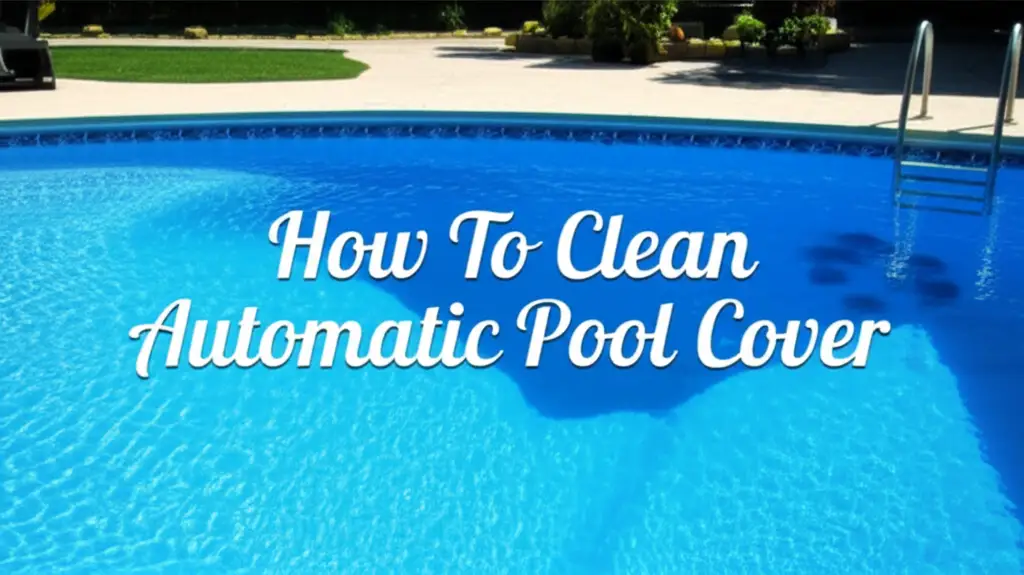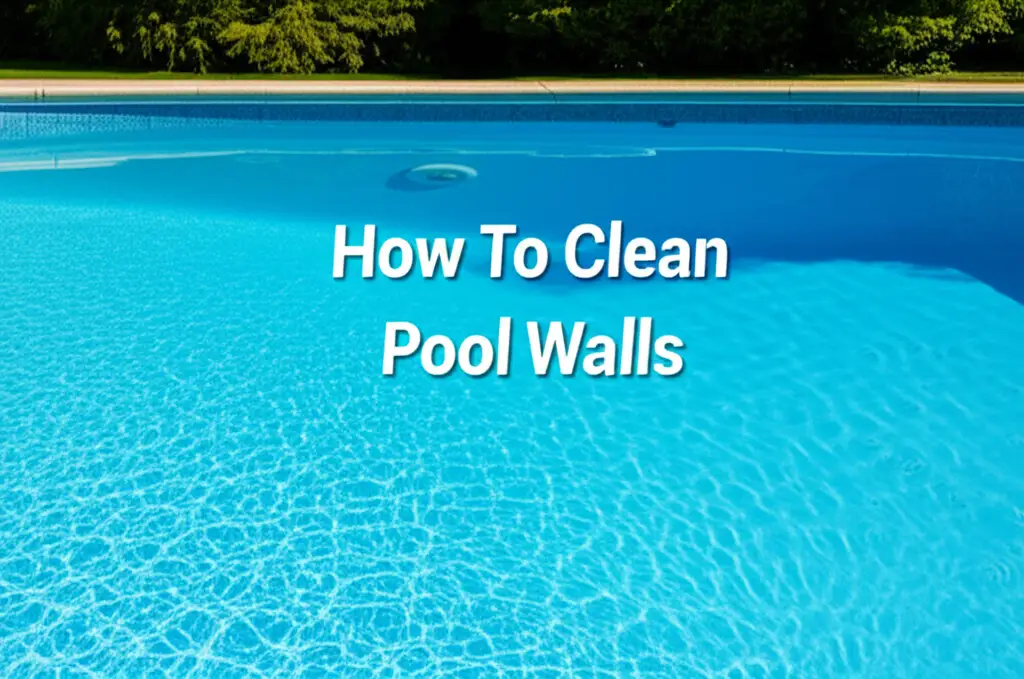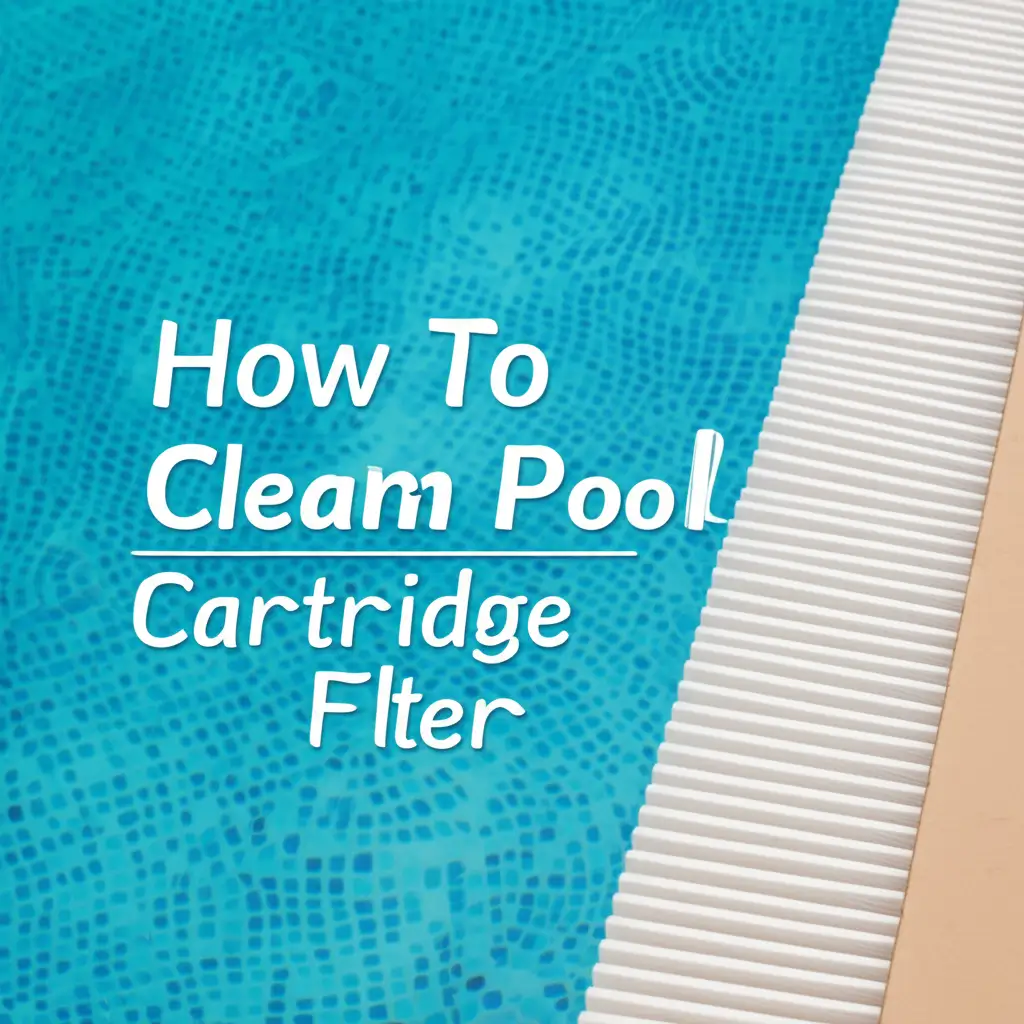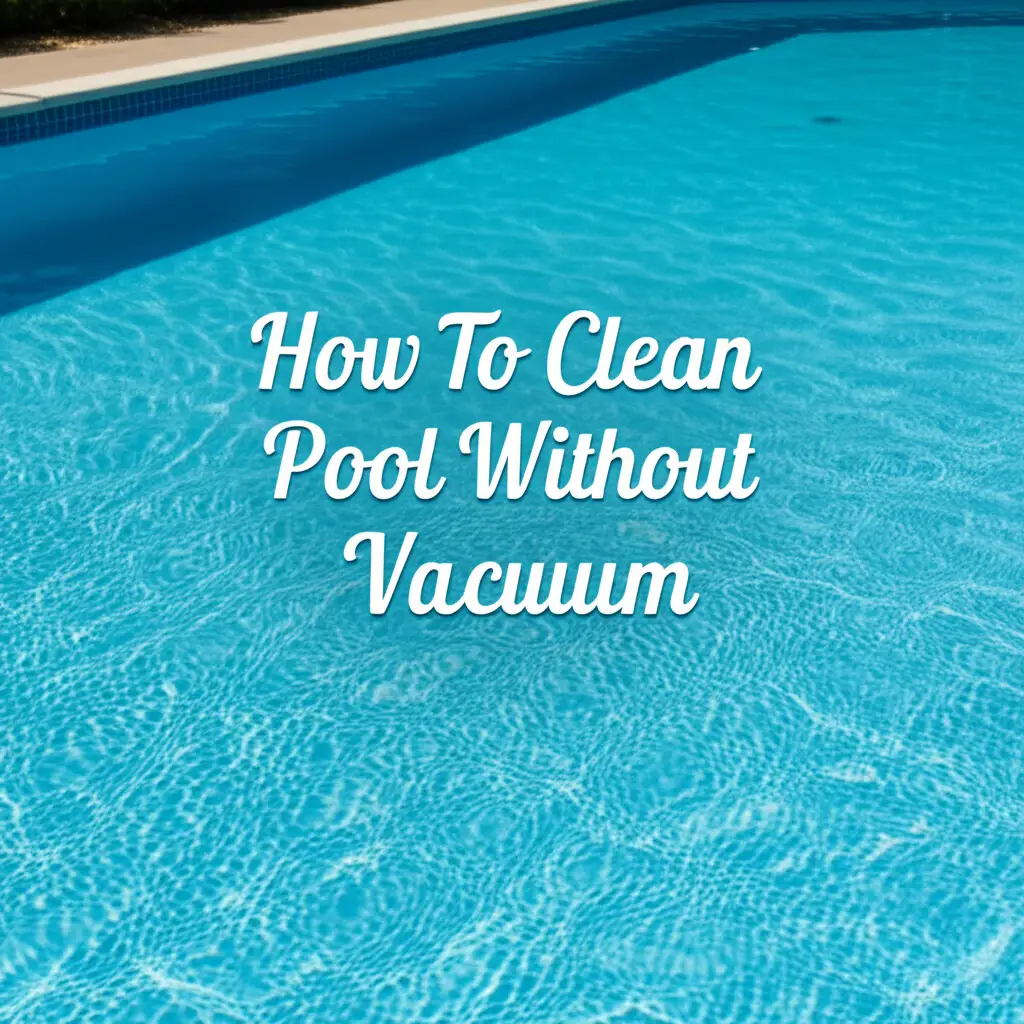· Pool Maintenance · 15 min read
How To Clean Blow Up Pool
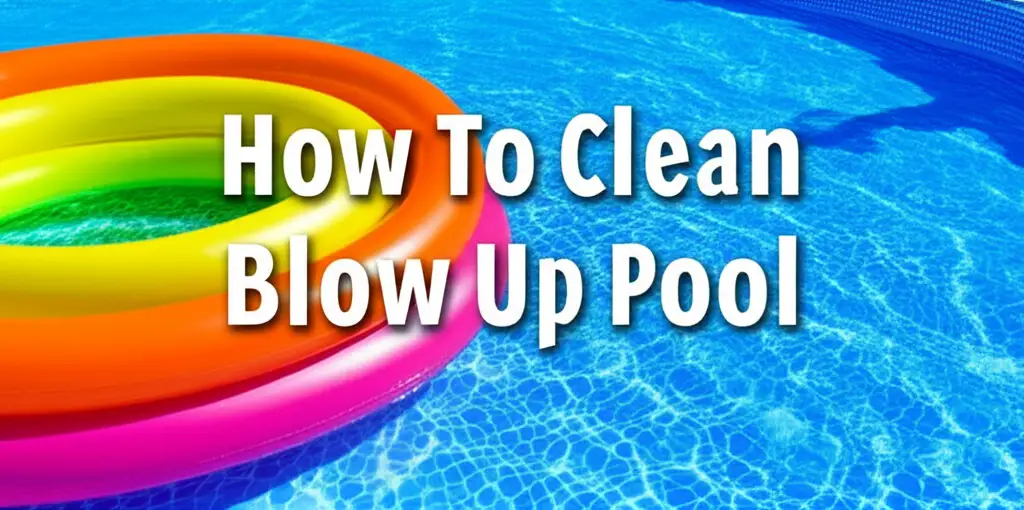
Sparkling Clean: How To Clean Your Blow Up Pool
Summer days mean fun in the sun. For many families, that means cooling off in a blow up pool. These pools offer instant relief from the heat. They are easy to set up and bring so much joy.
However, a clean pool is a happy pool. Learning how to clean blow up pool is essential for lasting enjoyment. Dirt, leaves, and even algae can quickly turn your backyard oasis into a murky mess. A dirty pool is not safe or inviting. Regular cleaning keeps the water clear and your family healthy. This guide will walk you through everything. We cover essential tools and step-by-step cleaning methods. We also discuss common problems and how to keep your pool spotless all season.
Takeaway
Keeping your blow up pool clean is simple and ensures fun.
- Drain all water from the pool.
- Scrub the surfaces with a soft brush and mild cleaner.
- Rinse the pool thoroughly with fresh water.
- Dry the pool completely before refilling or storing.
- Perform routine maintenance to prevent grime buildup.
How do you clean a blow up pool?
You clean a blow up pool by first draining all its water. Next, scrub the interior surfaces using a soft brush and a mild soap solution. Rinse the entire pool with clean water. Finally, dry it completely in the sun or with towels before refilling for use or folding for storage.
Why Regular Blow Up Pool Cleaning Matters
A blow up pool seems simple. You fill it with water, and the fun begins. But soon, you might notice changes. The clear water can become cloudy. The smooth lining can feel slimy. These signs mean it is time to clean your blow up pool.
Regular cleaning is very important. It keeps your pool looking good. More importantly, it keeps your family safe. Standing water creates a perfect environment for germs. Bacteria, viruses, and fungi can grow quickly. These can cause skin rashes or ear infections. Young children are especially at risk. They often swallow pool water during play. Keeping the pool clean prevents these health problems.
Algae growth is another big issue. Algae makes the pool slippery and green. It can make the pool dangerous to use. A clean pool prevents algae from taking hold. Proper maintenance also extends the life of your inflatable pool. Dirt and chemicals can break down the material. This leads to tears or leaks. A well-cared-for pool will last many summers. You save money by not replacing it every year. Cleaning your pool ensures a safe, fun, and long-lasting swimming experience. When dealing with similar water features, remember that maintaining cleanliness is key. For example, knowing how to clean an above ground pool with algae can offer helpful insights, as some principles apply.
Essential Tools and Supplies for Blow Up Pool Cleaning
Before you start cleaning your blow up pool, gather your supplies. Having everything ready makes the job quicker. You probably have most items around your house. You do not need fancy equipment for a sparkling clean pool.
Here is a list of what you will need:
- Soft-bristled brush or sponge: This helps scrub away dirt without damaging the pool material. Avoid abrasive scrubbers.
- Bucket: Use this for mixing your cleaning solution.
- Garden hose: Essential for rinsing the pool.
- Mild soap or detergent: Dish soap works well. You can also use a small amount of non-toxic, bleach-free household cleaner.
- White vinegar: A great natural cleaner for tougher stains or mold. It also disinfects.
- Bleach (optional, highly diluted): For sanitizing or tackling stubborn algae. Use with extreme caution and very diluted.
- Microfiber cloths or old towels: For drying the pool.
- Rubber gloves: Protect your hands from cleaners.
- Goggles (optional): If using stronger cleaners like diluted bleach.
Always choose cleaners safe for your pool material. Read the instructions on your pool. Some materials react badly to harsh chemicals. A simple mix of warm water and mild dish soap is often enough for regular cleaning. For tougher jobs, vinegar is a powerful ally. For instance, if you are tackling hard water stains, knowing how to clean pool tile with vinegar can provide useful tips. It applies to other pool surfaces too.
Step-by-Step Guide: How To Clean Your Blow Up Pool
Cleaning your blow up pool does not have to be a big chore. By following these simple steps, you can ensure your pool stays clean. A clean pool provides a safe and inviting space for everyone. I usually tackle this on a sunny day. This helps with drying.
Draining the Pool
The first step is always to empty the pool. Most blow up pools have a drain plug. Find this plug, usually at the bottom. Open it and let the water flow out. You can direct the water to a garden or lawn. Make sure it does not flood your patio or neighbors’ yards. If your pool does not have a plug, you can tip it over. Be careful if it is still heavy with water. You might need help for larger pools. Once most of the water is out, move on to the next step. Some pools also come with an attachable hose for draining, making the process much smoother.
Scrubbing Away Grime
Now the real cleaning begins. Once the pool is empty, you will see all the dirt. This includes grime, leaves, and possibly slimy film. Start by rinsing the pool with your garden hose. This removes loose debris. Then, prepare your cleaning solution. I use a bucket of warm water mixed with a few drops of mild dish soap. For tougher spots, a solution of equal parts white vinegar and water works wonders. Dip your soft brush or sponge into the solution. Begin scrubbing all interior surfaces of the pool. Pay attention to the bottom and the corners. These areas often collect the most dirt. If you also have an inflatable water slide, remember that similar techniques apply. You can learn how to clean a blow up water slide using these same methods. Scrub gently but firmly until all visible grime is gone.
Rinsing Thoroughly
After scrubbing, rinse the pool very well. This step is crucial. You need to remove all cleaning solution residue. Leftover soap can make the water foamy. It can also irritate skin. Use your garden hose to spray down all cleaned surfaces. Direct the water towards the drain plug. Keep rinsing until no suds or soapy film remains. You want the pool to feel completely clean. Run your hand along the surface. It should feel smooth, not slippery or sticky. This thorough rinse ensures your pool is ready for the next step.
Drying and Disinfecting
Once rinsed, let the pool air dry completely. Sunlight is a natural disinfectant. It also helps prevent mold and mildew growth. Flip the pool over if possible for faster drying. Make sure both sides get sun exposure. If you are cleaning for storage, complete drying is critical. Any moisture left behind can lead to mold, mildew, or a bad smell. You can use towels to speed up the process for smaller pools.
For extra disinfection, especially if you had algae or mold, consider a diluted bleach solution. Mix one teaspoon of bleach into one gallon of water. Spray this solution lightly on the cleaned surfaces. Let it sit for a few minutes. Then, rinse it off completely with fresh water. Allow the pool to dry again. Always handle bleach with care. Wear gloves and ensure good ventilation. This extra step helps kill any lingering germs or spores.
Storing Properly
Proper storage protects your blow up pool. First, ensure the pool is completely dry. Any moisture leads to mold. Deflate the pool fully. Remove all air from the chambers. Fold it neatly. This prevents creases and damage. Store the folded pool in a cool, dry place. Keep it away from direct sunlight. Protect it from extreme temperatures. A storage bin or bag can keep it safe from pests and dust. Proper storage extends your pool’s life. It will be ready for fun next season.
Tackling Common Blow Up Pool Problems: Algae and Mold
Even with regular cleaning, your blow up pool might face common issues. Algae and mold are two frequent culprits. They make your pool look bad and can be unhealthy. But do not worry, they are fixable. I have dealt with these many times.
Algae usually appears as a green, slimy film. Sometimes it can be black or pink. It grows when water sits for too long. Warm weather and sunlight help it grow faster. To remove algae, you need to scrub. First, drain the pool completely. Then, use a stiff brush and a cleaning solution. A solution of one part bleach to ten parts water works well for tough algae. For a more natural approach, a mix of white vinegar and water is effective. Scrub all affected areas thoroughly. Rinse the pool very well after scrubbing. Make sure no bleach residue remains. For persistent algae problems in larger pool settings, you might find valuable insights on how to clean above ground pool with algae. These principles can often be scaled down for your blow up pool.
Mold is similar to algae but can be fuzzier. It often appears as black or dark spots. Mold thrives in damp, dark environments. If you stored your pool wet, mold might grow. To clean mold, use a solution of white vinegar and water. A stronger solution of one part vinegar to one part water is good for stubborn mold. Apply it to the moldy areas. Let it sit for 15-20 minutes. Then, scrub vigorously with a brush. Rinse well. Drying the pool fully in the sun after cleaning is key. Sunlight helps kill any remaining mold spores. Proper drying prevents future mold growth. Always ensure good ventilation when cleaning with bleach or strong vinegar. These simple steps help you keep your blow up pool free from these unwelcome guests.
Maintaining Your Blow Up Pool for Lasting Fun
Cleaning your blow up pool is only part of the job. Regular maintenance keeps it clean longer. It also extends the pool’s life. Think of it as a small investment in bigger fun. I always tell my friends that a little effort daily saves a lot of work later.
Here are simple maintenance tips:
- Skim Daily: Use a small net to remove leaves, bugs, and debris. This stops organic matter from breaking down in the water. It prevents algae growth. This simple step takes only a few minutes.
- Change Water Regularly: For small blow up pools, changing the water every few days is best. Fresh water minimizes germ growth. It also flushes out dissolved contaminants. For larger inflatable pools, you might need a filter pump.
- Cover the Pool: When not in use, cover your pool. A simple tarp works well. This keeps out debris. It also reduces sunlight exposure. Less sunlight means less algae growth. It also helps prevent water evaporation.
- Check Water Chemistry (for larger pools): Some larger inflatable pools use small pumps and filters. You might also add very small amounts of chlorine. If so, test the water regularly. Use test strips to check pH and chlorine levels. Keep them balanced for clear, safe water. However, most standard blow up pools do not require complex chemistry.
- Rinse After Each Use: If you have time, a quick rinse of the pool walls and bottom before refilling can help. This washes away sunscreen, dirt, and oils before they settle.
- Dry and Store Properly: If you deflate the pool after each use, ensure it is completely dry. Fold it neatly. Store it in a dry, shaded place. This prevents mold and damage.
Consistent maintenance means you spend more time swimming and less time scrubbing. It makes enjoying your blow up pool simple and worry-free.
When to Repair vs. Replace Your Inflatable Pool
Your blow up pool offers endless summer joy. But like all things, it has a lifespan. You might wonder when it is time to say goodbye. Knowing when to repair versus replace saves you time and money. I have learned to spot the signs over the years.
Small punctures or tears are often repairable. Most blow up pools come with a patch kit. If not, general vinyl repair kits work well. To find a leak, inflate the pool. Then, spray a soapy water solution on the surface. Bubbles will form where air is escaping. Clean the area around the leak. Apply the patch according to the kit instructions. Press it firmly. Let it cure for several hours. A good patch can extend your pool’s life significantly. This is a cost-effective solution for minor damage.
However, some damage is too much. Large rips are hard to patch effectively. They often lead to continuous air loss or water leakage. Significant sun damage can make the vinyl brittle. You might see cracking or fading. This material is weak. It will likely develop new leaks quickly. Widespread mold or mildew that you cannot remove is also a sign. This indicates the material itself is compromised. Constant patching means it is time for a new pool. If repairs become frequent or ineffective, replacement is the better choice. Consider the cost of a new pool versus the effort of endless repairs. A new pool provides fresh, reliable fun. It ensures safety and avoids frustration.
Eco-Friendly Blow Up Pool Cleaning Options
Many people want to clean their homes with fewer chemicals. This desire extends to pool care too. Using eco-friendly options for your blow up pool is good for your family. It is also better for the environment. You can achieve a clean pool without harsh substances. I always try these natural methods first.
White vinegar is a cleaning superstar. It is a natural disinfectant and deodorizer. You can use it to tackle light grime and even some algae. Mix equal parts white vinegar and water in a spray bottle. Spray the pool’s surfaces. Let it sit for about 10-15 minutes. Then, scrub with a soft brush and rinse thoroughly. Vinegar works by breaking down dirt and killing germs. It leaves no harmful residue. It is safe for kids and pets after rinsing.
Baking soda is another great natural cleaner. It is a mild abrasive. It helps scrub away grime without scratching the pool material. Make a paste with baking soda and a little water. Apply this paste to stubborn spots or stains. Let it sit for a few minutes. Then, scrub gently and rinse clean. Baking soda also helps neutralize odors. It is very gentle. For more detailed instructions on using these common household items, you can explore resources like how to clean with vinegar and baking soda. These natural solutions offer a powerful clean.
For daily maintenance, a simple solution of water and a small amount of mild, biodegradable dish soap works well. Always choose dish soaps that are free of harsh chemicals and fragrances. After scrubbing, always rinse the pool thoroughly with fresh water. This removes all soap residue. These natural cleaning methods keep your blow up pool sparkling clean. They are also gentle on the environment. They keep your family safe from chemical exposure. You can enjoy your pool knowing it is truly clean.
Frequently Asked Questions
How often should I clean my blow up pool?
For daily use, skim debris out. Change the water and clean the pool completely every few days, or at least once a week. If the water appears cloudy, slimy, or green, clean it immediately. A small pool needs more frequent full cleanings due to the smaller water volume.
Can I use bleach to clean my blow up pool?
Yes, you can use bleach, but with extreme caution. Mix one teaspoon of household bleach with one gallon of water. Use this diluted solution to sanitize surfaces. Always rinse the pool thoroughly with fresh water afterward. Ensure no bleach residue remains before refilling.
How do I get rid of green algae in my blow up pool?
To remove green algae, drain the pool fully. Scrub all affected surfaces with a soft brush. Use a solution of one part bleach to ten parts water, or equal parts white vinegar and water. Rinse the pool multiple times with fresh water until all traces of algae and cleaner are gone.
What’s the best way to dry an inflatable pool?
The best way is to let it air dry completely in direct sunlight. Sunlight acts as a natural disinfectant and helps prevent mold and mildew. Flip the pool to ensure both sides dry. For quicker drying, you can use clean towels to absorb excess moisture.
Can I leave water in my blow up pool all season?
It is not advisable to leave water in a blow up pool all season. Stagnant water becomes a breeding ground for bacteria, mosquitoes, and algae. For hygiene and safety, drain and clean the pool regularly. For larger pools with filtration, maintaining water quality is possible but requires effort.
How do I store my blow up pool for winter?
First, clean and dry your pool completely. Make sure there is no moisture left to prevent mold. Deflate it fully. Fold it neatly to avoid creases and damage. Store the folded pool in a cool, dry place. Keep it away from pests and extreme temperatures, such as a shed or garage.
Conclusion
Keeping your blow up pool clean is simple. It ensures endless summer fun. We have covered the best ways to clean blow up pool models of any size. You now know the right tools. You understand the step-by-step process. You also have solutions for common problems like algae and mold. Regular maintenance saves you effort in the long run. It also protects your investment.
A clean pool is a safe pool. It protects your family from germs. It also makes your backyard a more inviting place. Do not let a dirty pool ruin your summer. Embrace these simple cleaning and maintenance habits. Make them part of your summer routine. Grab your brush, your mild soap, and get ready. Your blow up pool deserves to sparkle. Enjoy clear, cool water all season long. Dive in and make some wonderful memories!
- inflatable pool cleaning
- pool care tips
- summer pool maintenance
- algae removal pool

